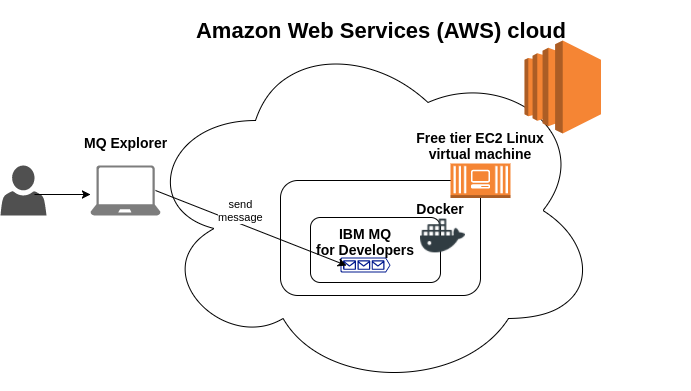Running free IBM® MQ for Developers (and Testers)
- By default, the supplied Dockerfile runs IBM MQ for Developers, but also works for IBM MQ. The source can be found on the ibm-messaging GitHub. There's also a short demo video available. A pre-built version of this image is available on Docker Hub as ibmcom/mq with the following tags: cd, 9-cd, 9, latest; lts, 9-lts; 8; Docker Store. A pre-built version of this image is available on Docker Store.
- Welcome to this video intro of IBM MQ 9. This video is intended for software professionals, especially those working with IBM JMS technology. In this video w.
- Ahora nos queda iniciar MQ en docker, ejecutar el siguiente comando. Docker run –env LICENSE=accept –env MQQMGRNAME=QM1 –publish 1414:1414 –publish 9443:9443.


In this guide we have provided clear instructions, commands to setup the command line tools on Mac for Docker. How To Run Docker, Containers On IBM Bluemix. The difficulty exists as Bluemix has deprecated single and scalable containers and default service is now Kubernetes clusters. There are users who are not used with Kubernetes.
IBM have released a special IBM® MQ for Developers (and Testers) you can run for free. There are two main options how to run it.Install Docker For Mac
- Install on your laptop/server/VM
- Use the docker image
Running on Docker in AWS free tier from Windows
Unfortunately it is not possible to run Docker Linux images on Windows systems. So you cannot run a Docker IBM MQ for Developers on your Windows laptop. To work around that we will use a free AWS Linux virtual machine. We will sign up for a free AWS EC2 account, run a Linux VM there, install docker and run IBM MQ. AWS free tier will allow you to use a Linux host for a year free of charge. Follow these steps to install a Docker IBM® MQ for Developers on AWS free tier:Docker Mac Address
- Create a free account on the AWS website. You will need a credit or debit card to register, but it will not be charged as long as you use the free tier only. Please note it might take up to 24 hours to activate your account.
- Create a linux virtual machine instance on AWS EC2. Make sure you keep the PEM file you have downloaded, you will use it to connect to the virtual machine very soon using PuTTY.
- Download PuTTY and PuTTYGen
- Connect using PuTTY to your AWS EC2 Linux instance
- You should now see a PuTTY connected to your instance
- Run the following commands to update yum and install docker, and make sure you do not get any errors:
- Display, read and make sure you understand and are OK with the IBM® MQ license by running: You will be accepting the license in the next step.
- Run Docker MQ (please notice that by setting LICENSE=accept you are accepting the license you have seen in the previous step):
- Allow for connections from your IP to the AWS EC2 instance on ports used by IBM® MQ (1414 and 9443) by adding new rules to the security group. Note that if your IP changes, you will loose the connectivity and have to do this step again.
- You can test the connection by using a web browser to connect to the web console. Open this URL in your browser https://your-ec2-hostname:9443/admin/ and use username admin and password passw0rd.
- Done! Your MQ instance is up and running. You can now try connecting to it with your application and Traffic Parrot by pointing them at your-ec2-hostname, port 1414, queue manager name QM1, username app and an empty password. There are a few default queues and topics defined there which you can use, if you need more you will have to add them. For more details see instruction at the official IBM® MQ docker image website.
- Next step, follow the JMS IBM® MQ mocking and service virtualization tutorial to learn how to simulate systems communication using IBM® MQ queues and topics and test your software in isolation. It will help you find more bugs and reduce time it takes to test.